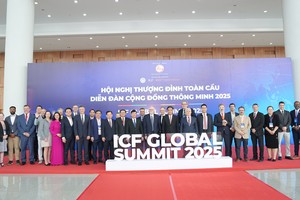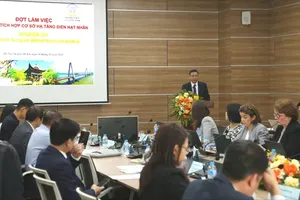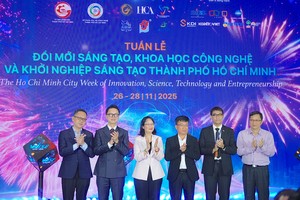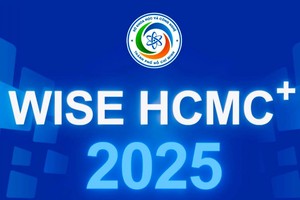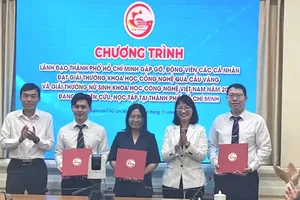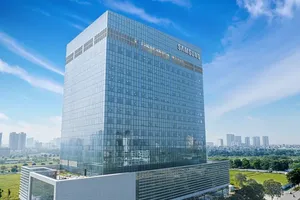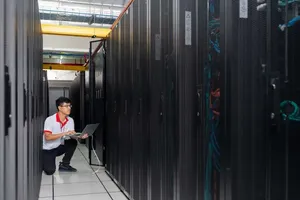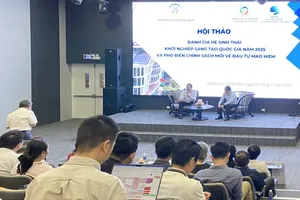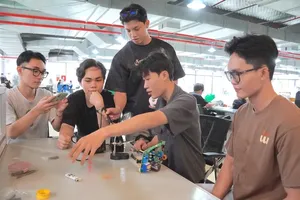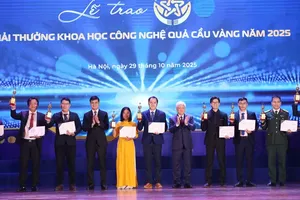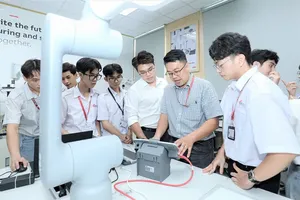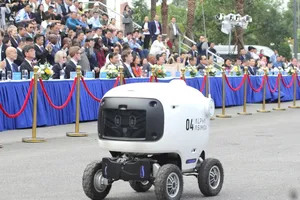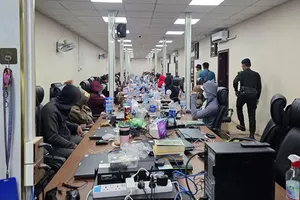This initiative seeks to foster a dynamic startup ecosystem, setting the stage for the development of a smart, livable and ambitious city ready for global engagement.
Previously, Binh Duong Province identified the development of the digital technology industry and the semiconductor sector as essential to sustaining long-term growth, creating new growth drivers, enhancing competitiveness, and proactively integrating into global value chains.
The province has also established and operated a Community Innovation and Startup Support Center, and developed FabLabs and TechLabs at universities and colleges.
According to the outlined roadmap, the immediate focus will be on launching the large Information Technology Park, establishing a Science and Technology Park, and beginning construction on an integrated education and training complex. The city aims to transition its economic growth model by adopting scientific and technological advancements, promoting innovation, and embracing green, circular, and knowledge-based economies.
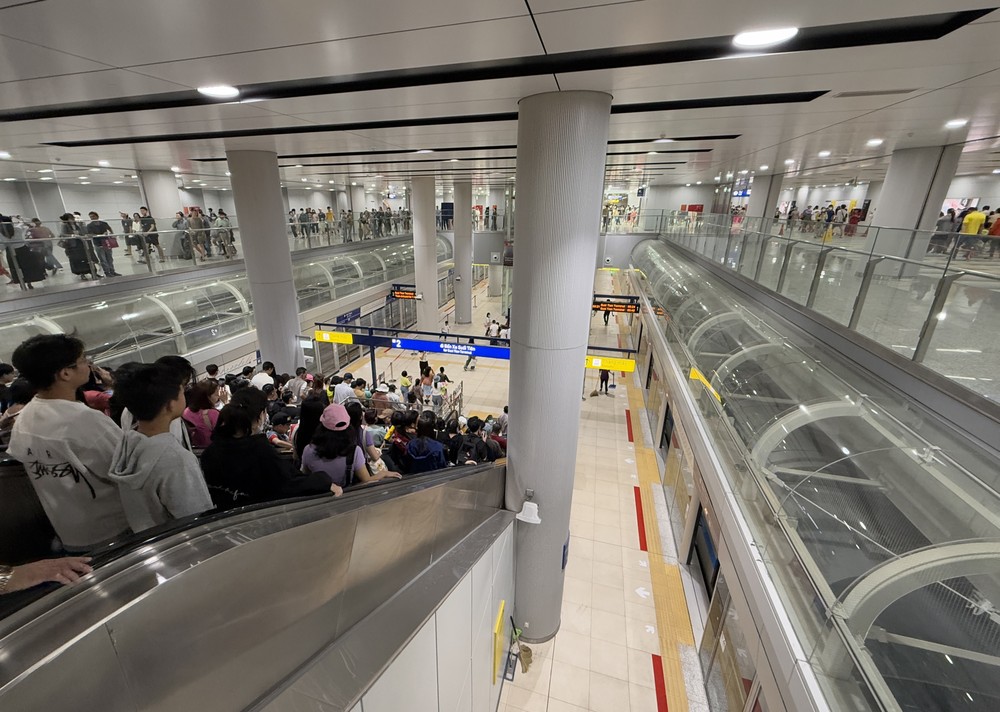
Meanwhile, the former Ba Ria–Vung Tau Province has been developing state-of-the-art digital infrastructure with massive capacity and ultra-broad bandwidth, on par with advanced countries, while working toward full 5G coverage across the region. The province has identified science and technology as essential for promoting socio-economic growth.
Strategic planning for technology zones and high-tech zones
The Ho Chi Minh City Science and Technology sector will focus on leveraging the potential of each region in a synchronized manner across various fields. Regarding infrastructure, priority will be given to developing modern, integrated digital infrastructure, particularly by attracting investment in data centers, high-performance computing centers, and supporting telecom providers to expand 5G network coverage to establish a seamless connectivity foundation.
High-tech zones, centralized information technology zones and high-tech agriculture zones will be expanded and newly developed with specific strategies across the city.
At the same time, businesses throughout the city will be encouraged to utilize the Science and Technology Development Fund for more effective R&D and technological innovation activities.
Significantly, the project titled 'Research and Application of the Circular Economy Model for Sustainable Socio-Economic Development in Con Dao District of former Ba Ria–Vung Tau Province from 2022 to 2025 with a vision to 2030' holds a strategic and regionally unique significance.
It is anticipated that activities in science, technology, and innovation will greatly enhance the development of cultural, social, and human capital, with the goal of keeping the province’s Human Development Index (HDI) above 0.7 and ensuring that more than 40 percent of businesses participate in innovation-related activities.
Prior to its merger with Binh Duong and Ba Ria-Vung Tau provinces, Ho Chi Minh City was a major hub for science and technology in the region and across the country. It boasted a robust network of 97 universities and colleges, including esteemed institutions like Ho Chi Minh City National University, known for their advanced research capabilities. The city also hosted over 450 science and technology organizations, 134 state-of-the-art laboratories, and 123 intermediary organizations dedicated to supporting science, technology, and innovation activities.
Ho Chi Minh City has solidified its reputation through advanced science and technology hubs such as Quang Trung Software Park, Saigon High-tech Park, High-tech Agricultural Park, and the Creative Startup Center, which have established strong brands over the years.
The city leads in digital transformation and the adoption of Industry 4.0 technologies, with its digital economy contributing approximately 20 percent to the city's GRDP, marking it as a key growth driver.
Additionally, Ho Chi Minh City’s vibrant startup ecosystem supports over 2,000 startups—representing about 50 percent of Vietnam’s total—backed by more than 100 venture capital funds and over 20,000 individuals engaged in science and technology fields.
Ho Chi Minh City is shaping new development orientation
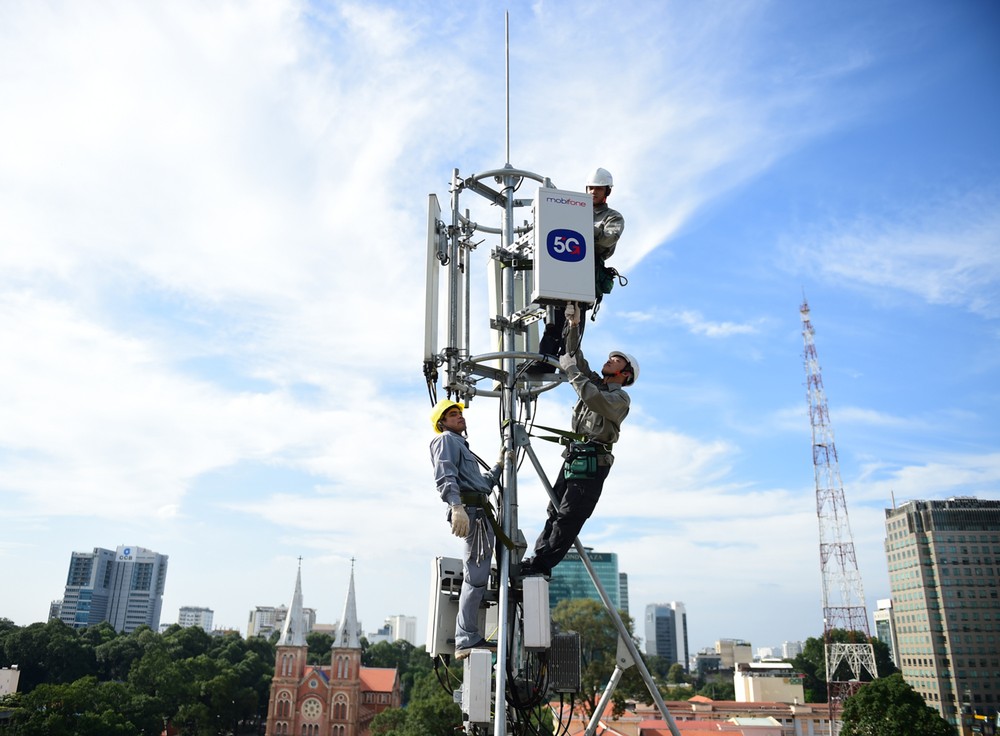
A representative from Ho Chi Minh City's Department of Science and Technology stated that, leveraging the strengths of each locality prior to the merger, Ho Chi Minh City aims to become a hub for attracting experts and scientists. This will create favorable conditions for international experts to engage in major research projects, particularly in key areas such as the marine economy, semiconductor industry, and artificial intelligence (AI).
The government will refine policies and institutions to promote private sector investment in research and development (R&D), accelerate comprehensive digital transformation, and encourage digital technology companies to innovate.
The R&D centers will collaborate to boost investment in research facilities that meet international standards and key laboratories. Ho Chi Minh City will establish a unified science and technology market, with the city's Technology Exchange Platform being developed and operated to connect with technology exchanges in the Southeast region and nationwide; thereby enhancing the connection of technology supply and demand between research institutes and universities in Ho Chi Minh City, and manufacturing enterprises, said Director Lam Dinh Thang of the Ho Chi Minh City Department of Science and Technology.
The department has outlined goals to create synergistic strength by leveraging existing potentials and advantages. This includes building a unified innovation and digital transformation ecosystem, fostering a regionally and internationally scaled innovation and startup ecosystem that closely connects stakeholders such as research institutes, universities, businesses, scientists, investors, and state management agencies across Ho Chi Minh City.
The Ho Chi Minh City Innovation and Startup Center will be developed in alignment with the regional and national network of centers. The city will become a national hub for data center infrastructure, establishing a large-scale regional data center to serve the entire expanded Ho Chi Minh City.
The former Binh Duong area will be positioned as the "manufacturing hub" for smart industry and modern logistics in Ho Chi Minh City, prioritizing the application of technologies such as robotics, automation, and 3D printing. High-tech zones and concentrated IT zones will be expanded here to attract major technology corporations to invest in producing components and electronic microchips.
The Ba Ria - Vung Tau area will serve as a maritime gateway, a center for marine economy and clean energy, forming an internationally standardized R&D center for the marine economy and research complexes focused on oceans and natural resources. Concurrently, the application of S&T and digital transformation in logistics will be promoted to optimize the deep-water port system and develop smart tourism.
Three key activity task groups of the Ho Chi Minh City Department of Science and Technology
· Develop a strategic plan for Ho Chi Minh City's digital infrastructure, a critical component to establish a digital space, open data, and a foundation for a smart city.
· Promote comprehensive digital transformation within the department, focusing on building a digital governance system to support real-time management, evaluation, and monitoring.
· Aggressively implement Phase 2 of the project to reorganize public service units, aiming to streamline the organizational structure, reduce overlap, and enhance operational efficiency. This serves as a foundation for building an ecosystem of science and technology units with autonomous capabilities, ready to support science and technology tasks in the new context.
